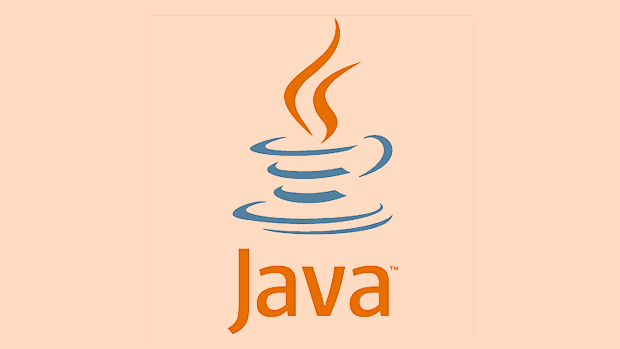How to generate a random number in Java?
Jul 12, 2025 am 12:07 AMThere are four common ways to generate random numbers in Java. 1. Use Math.random() to quickly obtain floating point numbers of 0~1, which is suitable for simple scenarios but cannot control seeds; 2. Use the Random class to generate multiple types of random numbers and support setting seeds, suitable for scenarios that require repeated tests; 3. It is recommended to use ThreadLocalRandom in a multi-threaded environment, which has better performance and no need to create instances manually; 4. When security needs are involved, the SecureRandom class should be used to provide stronger randomness guarantees but slower speed.

Generating random numbers in Java is not difficult. It can be achieved through several common methods, depending on what your needs are. For example, whether you want an integer or a floating point number, whether you need to specify a range, whether you need to encrypt and secure random numbers, etc.

Let’s start from several common usage scenarios and see how to generate random numbers using different methods.
Use Math.random() to quickly get a floating point number of 0~1
This is one of the easiest ways to suit scenarios where complex controls are not required. Math.random() returns a double type value greater than or equal to 0.0 and less than 1.0.

double randomValue = Math.random();
If you want to generate a number in a specific range, such as a random floating point number between 1 and 10, you can do this:
double randomBetweenOneAndTen = Math.random() * 9 1;
The meaning of this formula is: first multiply by the range difference (10 - 1 = 9), and then add the minimum value (1).
If you want integers, you can do type conversion or rounding.

- Advantages: The writing method is simple and can be done in one line.
- Disadvantages: Poor flexibility, cannot directly control seeds, and is not suitable for scenarios where repeated tests are required.
Generate more flexible random numbers using Random class
Java provides the java.util.Random class, which can generate various types of random numbers, including int, double, boolean, etc., and supports setting seeds.
import java.util.Random; Random rand = new Random(); int randomInt = rand.nextInt(100); // Generate integer double randomDouble = rand.nextDouble(); // Float between 0.0 and 1.0
You can also specify the range:
int randomInRange = rand.nextInt(50) 20; // integer between 20 ~ 69
If you need repeatable random sequences (such as for testing), you can use a constructor with seed:
Random randWithSeed = new Random(12345);
Supports generation of boolean values, arrays, and even streaming data (Java 8)
More efficient in multi-threading environment using ThreadLocalRandom
If you are generating random numbers in a multithreaded program, it is recommended to use ThreadLocalRandom , a tool class introduced in Java 7, which is specially optimized for concurrent environments.
import java.util.concurrent.ThreadLocalRandom; int randomInt = ThreadLocalRandom.current().nextInt(1, 101); // Include 1, excluding 101 double randomDouble = ThreadLocalRandom.current().nextDouble(0.0, 1.0);
- It avoids the problem of multiple threads scrambling for the same
Randominstance. - The interface is similar to
Random, but has better performance. - There is no need to explicitly create an instance, just use
current()method to get the instance of the current thread.
Small details supplement: Generate "real" safe random numbers
If your application involves cryptography or security-related logic, it is recommended to use SecureRandom class:
import java.security.SecureRandom; SecureRandom secureRandom = new SecureRandom(); byte[] randomBytes = new byte[16]; secureRandom.nextBytes(randomBytes); // Fill int randomInt = secureRandom.nextInt(100);
- It is based on a stronger source of entropy and has higher security.
- The speed is slower than the regular
Random, so it is only used when necessary.
Basically, these commonly used Java random number generation methods. Choose the appropriate method according to your usage scenario. For example, you can use Math.random() for rapid prototype development, use Random for general purposes, and use ThreadLocalRandom for concurrent environments. If you have high security requirements, use SecureRandom .
The above is the detailed content of How to generate a random number in Java?. For more information, please follow other related articles on the PHP Chinese website!

Hot AI Tools

Undress AI Tool
Undress images for free

Undresser.AI Undress
AI-powered app for creating realistic nude photos

AI Clothes Remover
Online AI tool for removing clothes from photos.

Clothoff.io
AI clothes remover

Video Face Swap
Swap faces in any video effortlessly with our completely free AI face swap tool!

Hot Article

Hot Tools

Notepad++7.3.1
Easy-to-use and free code editor

SublimeText3 Chinese version
Chinese version, very easy to use

Zend Studio 13.0.1
Powerful PHP integrated development environment

Dreamweaver CS6
Visual web development tools

SublimeText3 Mac version
God-level code editing software (SublimeText3)

Hot Topics
 Asynchronous Programming Techniques in Modern Java
Jul 07, 2025 am 02:24 AM
Asynchronous Programming Techniques in Modern Java
Jul 07, 2025 am 02:24 AM
Java supports asynchronous programming including the use of CompletableFuture, responsive streams (such as ProjectReactor), and virtual threads in Java19. 1.CompletableFuture improves code readability and maintenance through chain calls, and supports task orchestration and exception handling; 2. ProjectReactor provides Mono and Flux types to implement responsive programming, with backpressure mechanism and rich operators; 3. Virtual threads reduce concurrency costs, are suitable for I/O-intensive tasks, and are lighter and easier to expand than traditional platform threads. Each method has applicable scenarios, and appropriate tools should be selected according to your needs and mixed models should be avoided to maintain simplicity
 Understanding Java NIO and Its Advantages
Jul 08, 2025 am 02:55 AM
Understanding Java NIO and Its Advantages
Jul 08, 2025 am 02:55 AM
JavaNIO is a new IOAPI introduced by Java 1.4. 1) is aimed at buffers and channels, 2) contains Buffer, Channel and Selector core components, 3) supports non-blocking mode, and 4) handles concurrent connections more efficiently than traditional IO. Its advantages are reflected in: 1) Non-blocking IO reduces thread overhead, 2) Buffer improves data transmission efficiency, 3) Selector realizes multiplexing, and 4) Memory mapping speeds up file reading and writing. Note when using: 1) The flip/clear operation of the Buffer is easy to be confused, 2) Incomplete data needs to be processed manually without blocking, 3) Selector registration must be canceled in time, 4) NIO is not suitable for all scenarios.
 Best Practices for Using Enums in Java
Jul 07, 2025 am 02:35 AM
Best Practices for Using Enums in Java
Jul 07, 2025 am 02:35 AM
In Java, enums are suitable for representing fixed constant sets. Best practices include: 1. Use enum to represent fixed state or options to improve type safety and readability; 2. Add properties and methods to enums to enhance flexibility, such as defining fields, constructors, helper methods, etc.; 3. Use EnumMap and EnumSet to improve performance and type safety because they are more efficient based on arrays; 4. Avoid abuse of enums, such as dynamic values, frequent changes or complex logic scenarios, which should be replaced by other methods. Correct use of enum can improve code quality and reduce errors, but you need to pay attention to its applicable boundaries.
 What is a Singleton design pattern in Java?
Jul 09, 2025 am 01:32 AM
What is a Singleton design pattern in Java?
Jul 09, 2025 am 01:32 AM
Singleton design pattern in Java ensures that a class has only one instance and provides a global access point through private constructors and static methods, which is suitable for controlling access to shared resources. Implementation methods include: 1. Lazy loading, that is, the instance is created only when the first request is requested, which is suitable for situations where resource consumption is high and not necessarily required; 2. Thread-safe processing, ensuring that only one instance is created in a multi-threaded environment through synchronization methods or double check locking, and reducing performance impact; 3. Hungry loading, which directly initializes the instance during class loading, is suitable for lightweight objects or scenarios that can be initialized in advance; 4. Enumeration implementation, using Java enumeration to naturally support serialization, thread safety and prevent reflective attacks, is a recommended concise and reliable method. Different implementation methods can be selected according to specific needs
 What is an anonymous inner class?
Jul 07, 2025 am 02:18 AM
What is an anonymous inner class?
Jul 07, 2025 am 02:18 AM
Anonymous internal classes are used in Java to create subclasses or implement interfaces on the fly, and are often used to override methods to achieve specific purposes, such as event handling in GUI applications. Its syntax form is a new interface or class that directly defines the class body, and requires that the accessed local variables must be final or equivalent immutable. Although they are convenient, they should not be overused. Especially when the logic is complex, they can be replaced by Java8's Lambda expressions.
 Java String vs StringBuilder vs StringBuffer
Jul 09, 2025 am 01:02 AM
Java String vs StringBuilder vs StringBuffer
Jul 09, 2025 am 01:02 AM
String is immutable, StringBuilder is mutable and non-thread-safe, StringBuffer is mutable and thread-safe. 1. Once the content of String is created cannot be modified, it is suitable for a small amount of splicing; 2. StringBuilder is suitable for frequent splicing of single threads, and has high performance; 3. StringBuffer is suitable for multi-threaded shared scenarios, but has a slightly lower performance; 4. Reasonably set the initial capacity and avoid using String splicing in loops can improve performance.
 mysql coalesce function
Jul 09, 2025 am 01:09 AM
mysql coalesce function
Jul 09, 2025 am 01:09 AM
The COALESCE function is used to return the first non-null value in the parameter list and is suitable for processing NULL data. 1. The basic usage is to replace the NULL value, such as replacing the empty field with the default contact method; 2. It can be used to set the default value in aggregate query to ensure that 0 is returned instead of NULL when there is no data; 3. It can be used in conjunction with other functions such as NULLIF and IFNULL to enhance data cleaning and logical judgment capabilities.
 How Annotation Processing Works in Java
Jul 08, 2025 am 02:50 AM
How Annotation Processing Works in Java
Jul 08, 2025 am 02:50 AM
Annotation processor is an extended mechanism in the Java compilation stage, used to scan and process annotations in the source code, and can generate new code or preprocess it. Its core functions include: 1. When defining annotations, it needs to specify the retention policy and target element type; 2. Implement the AbstractProcessor class and rewrite key methods such as getSupportedAnnotationTypes, getSupportedSourceVersion and process; 3. Register the processor to declare a fully qualified name through a configuration file in the META-INF/services directory. Annotation processors are widely used in frameworks such as Dagger, ButterKnife and Roo






